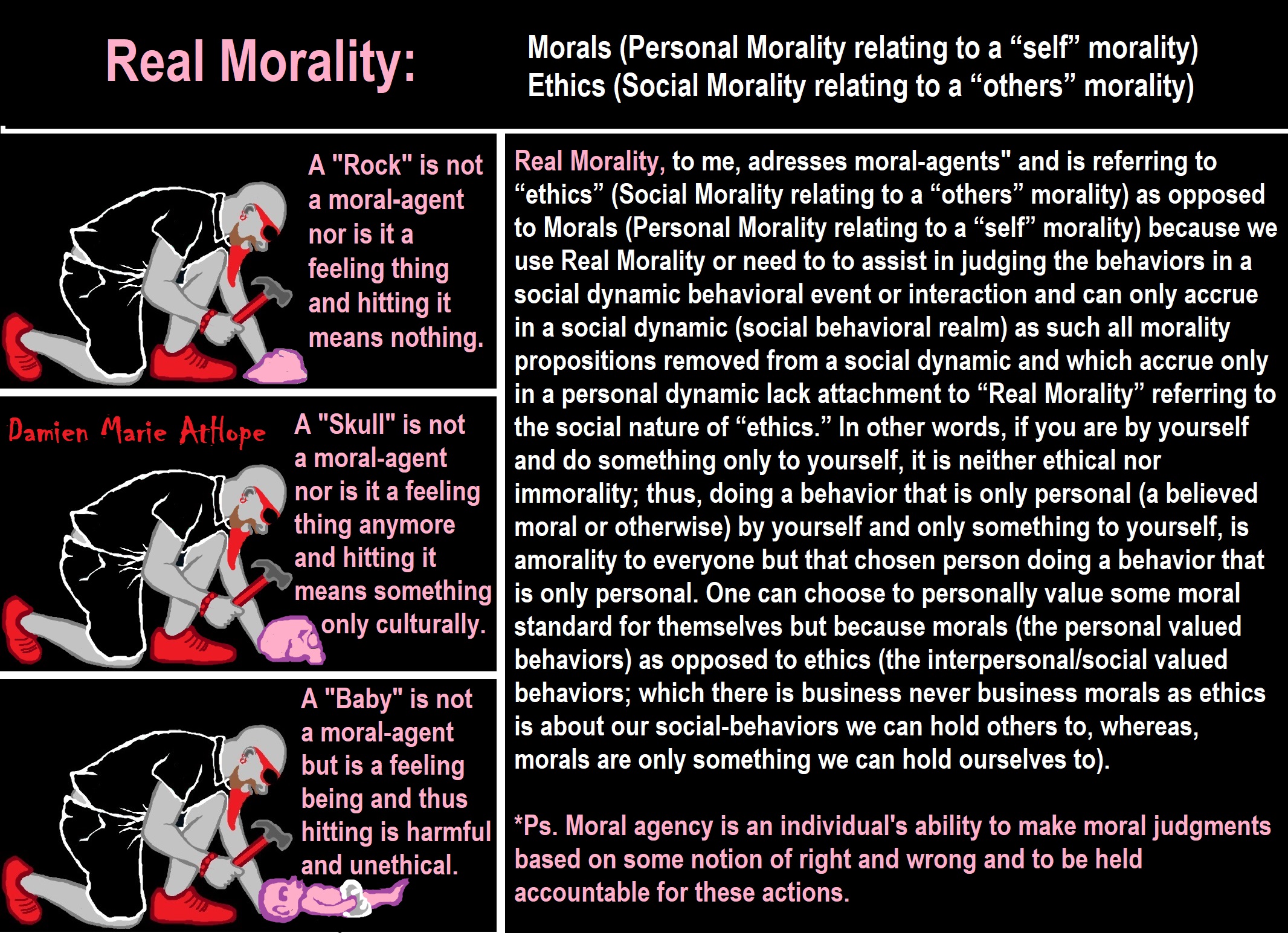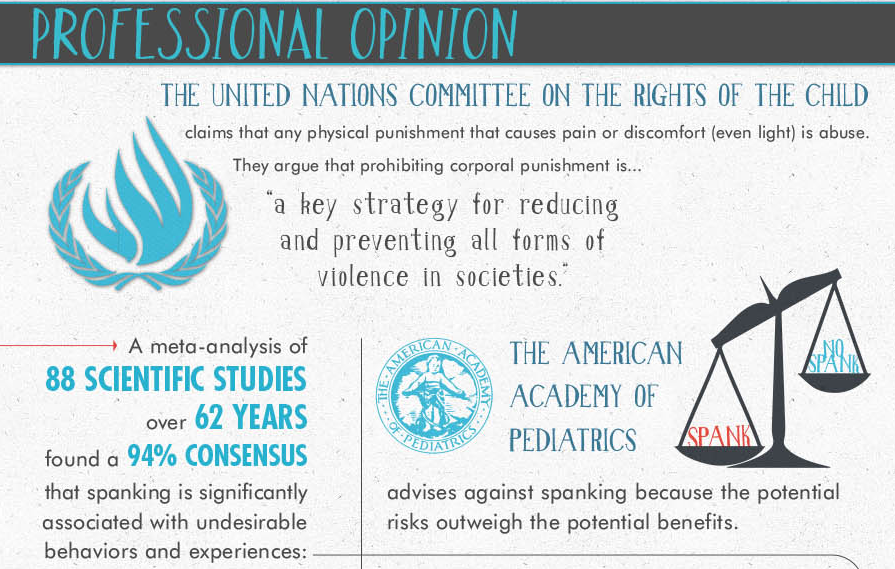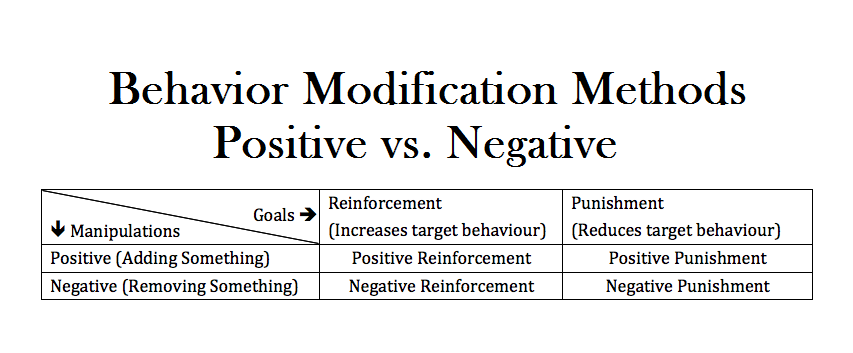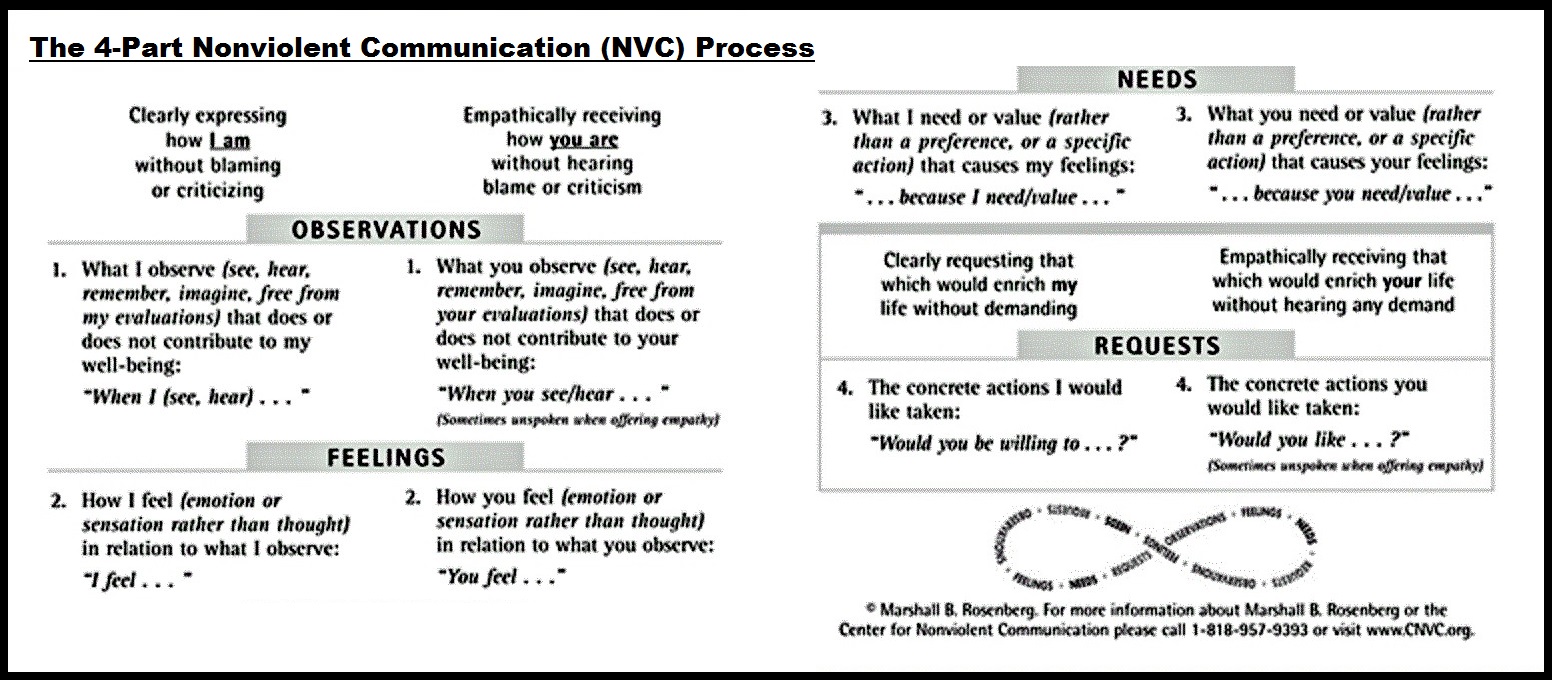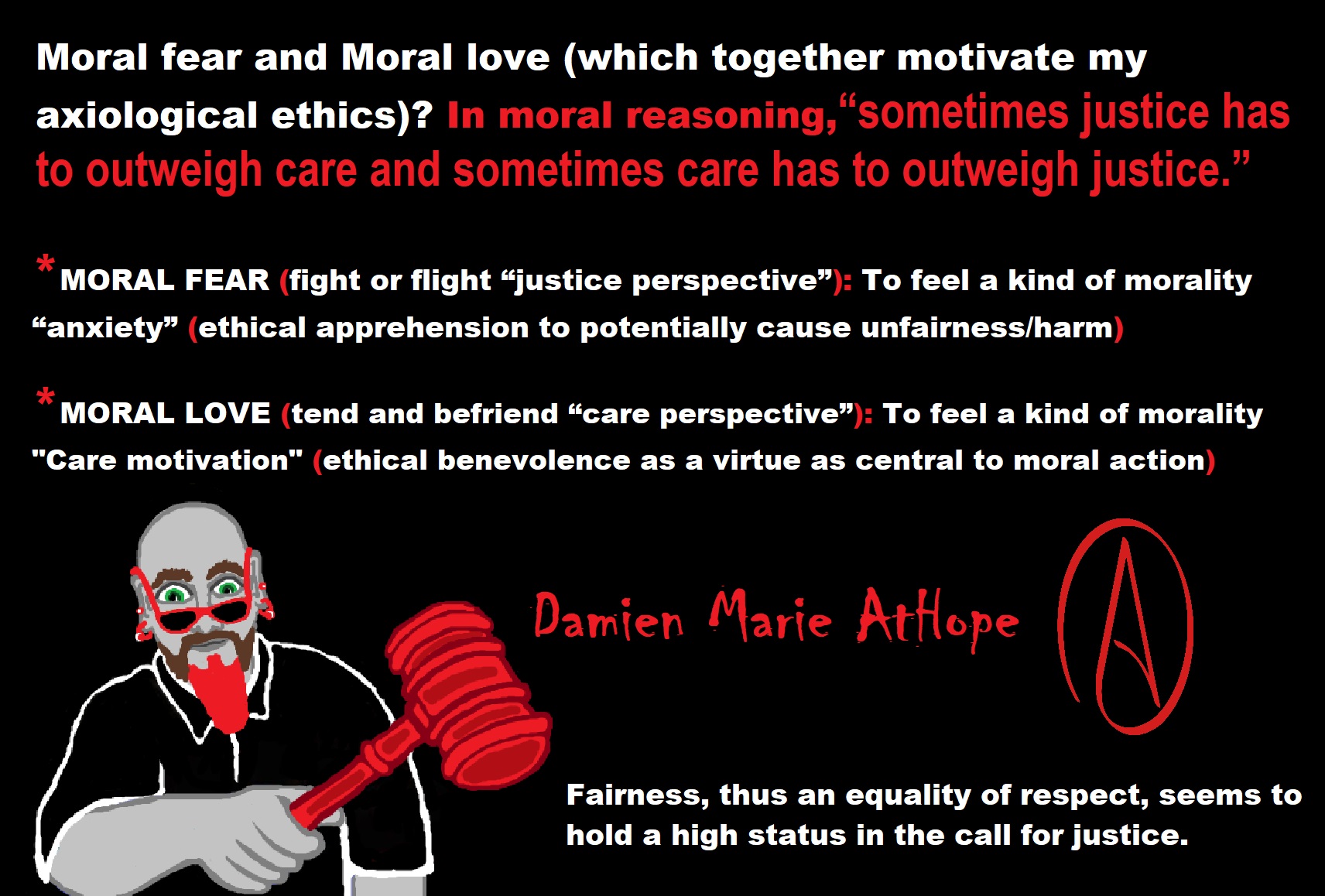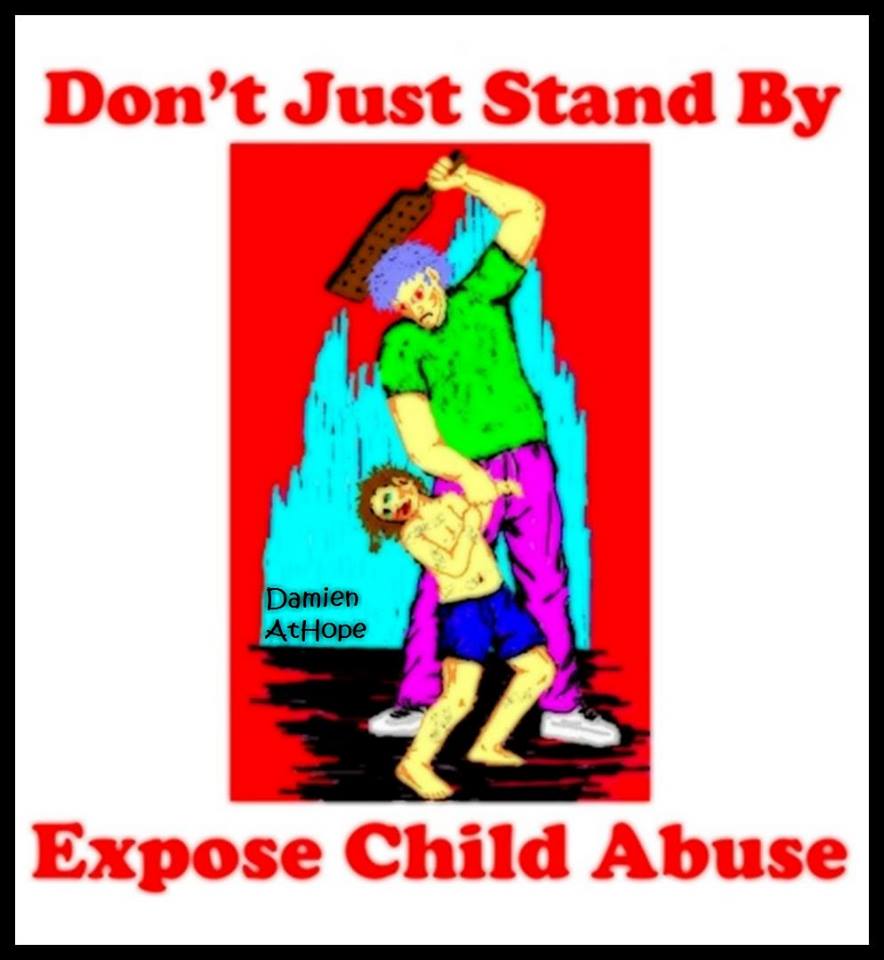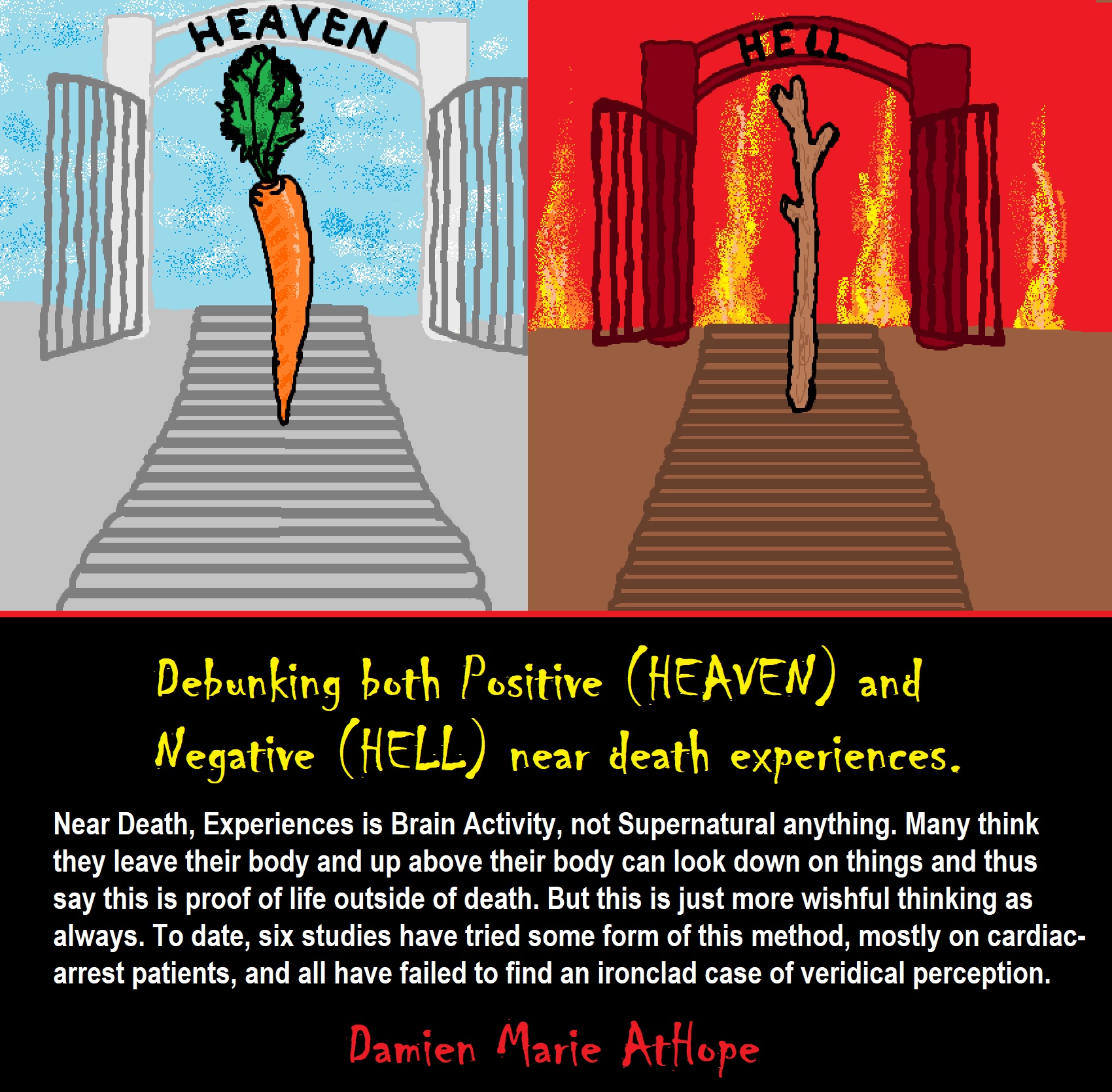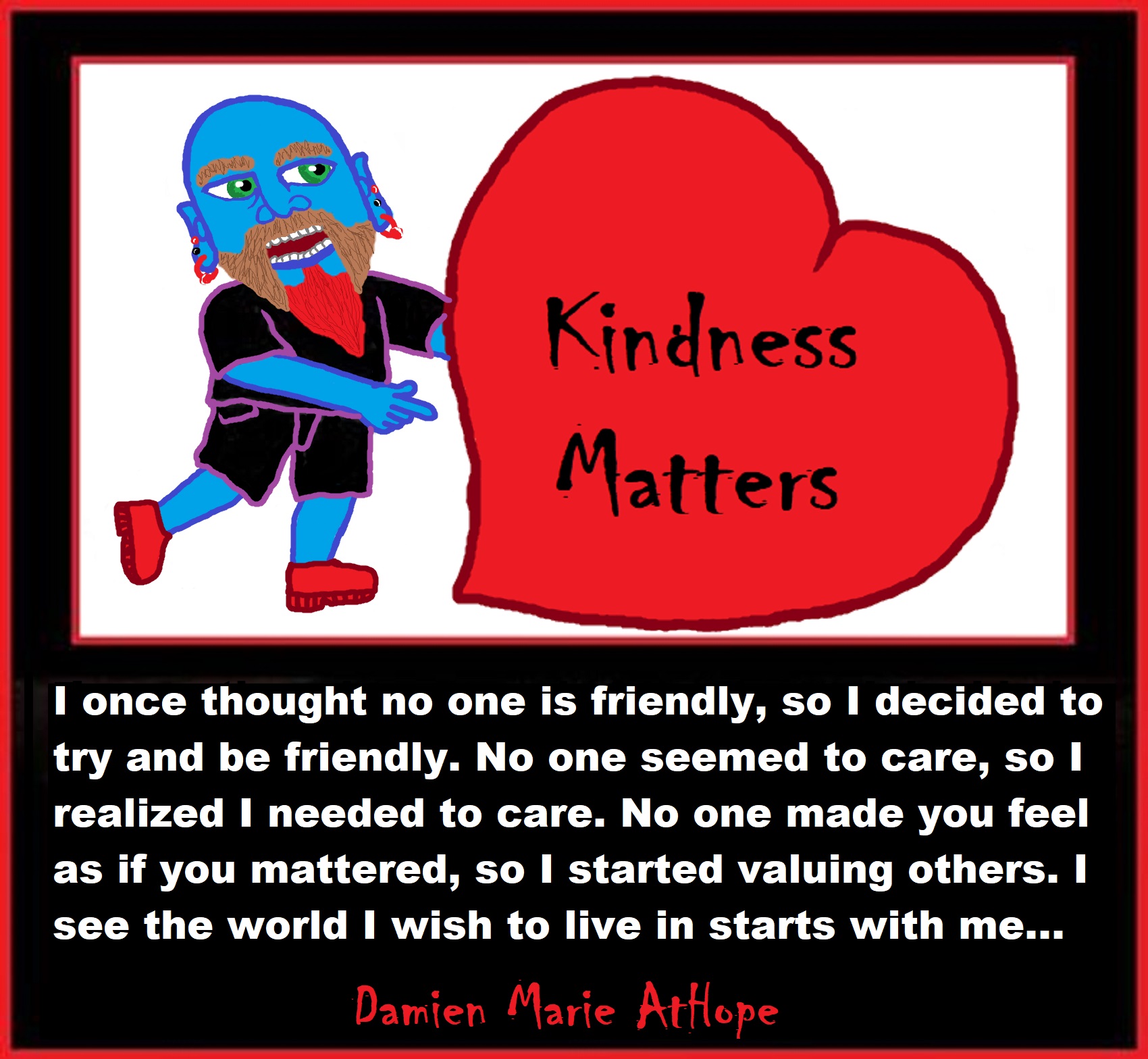
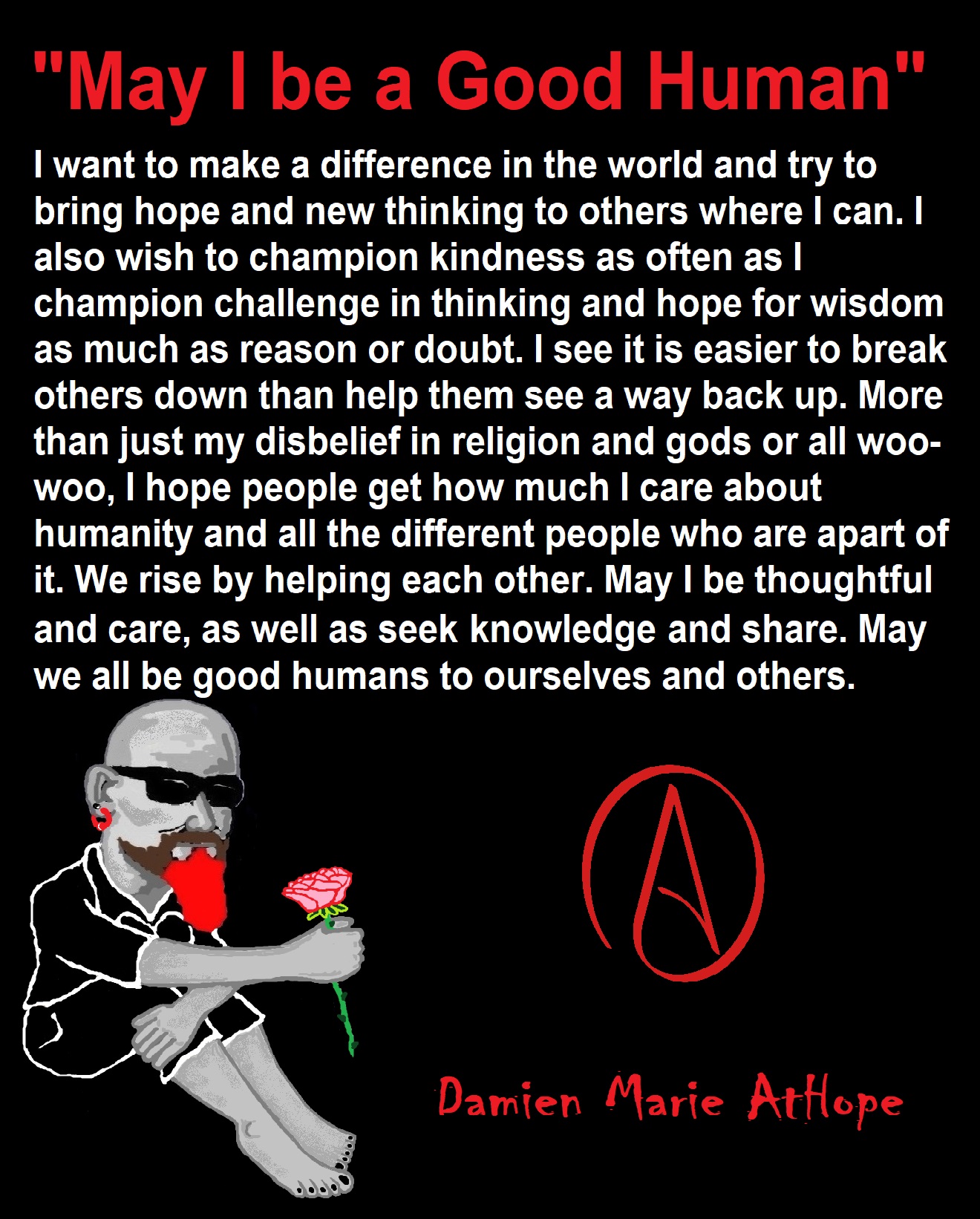

Behavior Modification Methods: Positive vs. Negative
This will mainly be a compilation of sourced ideas
Overall, there are two kinds of emotional motivations: pleasant (will be referred to as “positive”) and painful (will be referred to as “negative”).
Punishment versus Reinforcement
Punishment: To decrease the probability of a behavior occurring in the future—it discourages the target behavior.
Reinforcement: To increase the probability of a behavior occurring in the future—it encourages the target behavior.
“Positive” vs. “Negative”
Positive: when something is added or introduced.
Negative: when something is subtracted, or removed.
Positive Reinforcement vs. Negative Reinforcement
Positive reinforcement: To introduce something desirable to increase the probability of the target behavior in the future.
Negative reinforcement: To remove something undesirable to increase the probability of the target behavior in the future.
Positive Punishment vs. Negative Punishment
Positive Punishment: To introduce something undesirable after a behavior to reduce the probability of the target behavior in the future.
Negative Punishment: To remove something desirable after a behavior to reduce the probability of the target behavior in the future.
Negative Emotional Motivations Guilt and Shame
There are many misconceptions about guilt and shame. Many are them are perpetuated by those who try to use these feelings to keep us down and hold us back. I will not name who does this to us but if you examine your life it will become very obvious. In fact, under this post, I would love to hear from you about the creative ways these feelings have been used against you. Guilt and shame are tricky feelings that cause so much unnecessary suffering. Nearly identical in the way they work within us, guilt and shame generally form a single complex. But while it is possible to feel guilt without shame, we cannot feel shame without guilt. The way to distinguish them is this: Guilt is the feeling that follows a perceived wrongdoing. “I did wrong.” Shame is the feeling that we, ourselves, are made “wrong” or “bad” for what we perceive we did. It relates to the energy of every emotion from apathy through pride. Shame, on the other hand, is a grief related feeling. ref
Shame has been called our “most dreaded emotional experience. Whether we suffer shame ourselves or witness shame in others, who among us actively seeks the experience defined as “believing that we are flawed and therefore unworthy of love and belonging—something we’ve experienced, done, or failed to do makes us unworthy of connection”? ref
Shame and Motivation to Change
Shame may well deserve its bad rap, with repercussions ranging from the inconvenience of ineffective workplace team performance to using shame as a way to manipulate others to the lifelong debilitating shame resulting from childhood trauma. Shame researchers such as Brown(link is external) make compelling arguments for why we should be careful not to let shame rule our lives, and why guilt may be a preferable negative emotion, as it focuses our attention on specific events or behavior rather than the self. But is shame always bad for us? Maybe not, at least not if we are interested in self-change. Shame as a predictor of wanting to change: The authors of “Shame and the Motivation to Change the Self” (Emotion, December 2014) found that feeling shame was a stronger predictor than guilt or regret for motivation for positive self-change. They offer the following definitions of guilt and shame (emphases added):
- “Guilt arises when a person focuses on what specifically he or she did wrong (‘I did a bad thing’), often results when one has harmed an important relationship, and generally motivates reparative motivations including efforts to apologize for, fix, or undo the blameworthy act.”
- “Shame has a more dispositional focus in which people attend to negative aspects of the self (‘I was a bad person’) and has been linked to distancing motivations aimed at escaping the blameworthy event or hiding from public view.”
The researchers looked at to what extent emotions predicted
- wanting to change oneself (the “urge to be a better person,” wanting to change completely or change aspects of one’s personality);
- the desire for reparation (feeling the need to apologize or otherwise take action to “make things better”); and
- the urge to distance oneself (wanting to hide or remove oneself from a shameful situation).
They found that shame “was uniquely associated with the motivation to change the self above and beyond moral self-blame and harm to others.” Why would shame more so than guilt predict a desire for self-change? One possibility raised in the study is that because we feel the need to apologize and make reparations when we feel guilty, we may be less motivated to make lasting changes in ourselves. ref
Shame and the Motivation to Change the Self
Two studies examining people’s lived experiences of self-conscious emotions, particularly shame, in motivating a desire for self-change. Study 1 revealed that when participants recalled experiences of shame, guilt, or embarrassment, shame and, to some degree, guilt predicted a motivation for self-change. Study 2 compared shame, guilt, and regret for events and found that although shame experiences often involved high levels of both regret and guilt, it was feelings of shame that uniquely predicted a desire for self-change, whereas regret predicted an interest in mentally undoing the past and repairing the harm done. ref
Self-conscious emotions are cognition-dependent and help to regulate people’s interpersonal behavior. Self-conscious emotions such as shame require reflection on how one is being perceived and evaluated by other people, and involve the internalizing the expectations of others. Where the outcome is considered a failure an internal attribution would evoke shame, while a successful outcome would evoke pride. Shame is usually compared to guilt in terms of negative self-conscious emotions. To evoke shame, rather than guilt, two other attributions are important. First, the internal attribution is judged to be concerned with something stable and fixed about the individual, for example, ability. This is contrasted with an `unstable’ and an unfixed characteristic such as effort. The eliciting of shame involves attributions to the entire self (or `global’ self), rather than to just one part of the self. Shame also differs from embarrassment. Shame is elicited by the realization that others regard oneself as deficient, while embarrassment stems from the awareness that others’ view one’s presentation of self as inappropriate. Shame is generally accompanied by embarrassment but the converse is not, as a rule, true. Research on self-conscious emotions has developed in recent years, there has been work on positive social emotions, particularly pride. However, the role of the negative self-conscious emotions, in particular, shame, has been less developed. Negative emotions are important to study in terms of motivation for at least two reasons. First, negative emotions are linked more strongly to specific action orientations than is the case with positive emotions which implies that different negative emotions should be distinguished from each other. Second, negative emotions are more intensely felt than positive emotions and within the range of negative emotions, there are differing levels of intensity. Shame is the most intensely felt of the negative self-conscious emotions, more than guilt, embarrassment, and humiliation. The strength of the felt emotion will have an impact on the motivational force. Motivation is conceptualized through goal setting theory and shame’s role in the goal situation, goal commitment and goal achievement is identified. The analysis and framework presented here identifies the conditions in goal-setting which are likely to increase the probability of shame feelings and further, how, contrary to models of shame emphasizing withdrawal behavior, the conditions under which shame may generate a higher likelihood of a prosocial behavior. It is argued that through the goals setting process, implicitly use negative emotions such as shame to highlight the significance of appropriate behavior, but that this must be done at relatively mild levels. The threat or experience of shame must not be so distressing that they impair the relationship and that shame is used as a means of socialization rather than an end-in-itself. ref
Alternatively, Negative and Positive could be used as a team method; such as Negative to get things started, but understanding it is Positive that keeps things going. “Push-Pull Motivation” which seems to be the foundation of Pavlok’s habit change method. ref
According to Robert Evans Wilson Jr. shame can be an effective motivator, would I recommend using it to motivate others? ABSOLUTELY NOT! Shame is extremely motivating when it comes to eliminating the unwanted behavior, but at the same time, it is also a de-motivator. Shame is so powerful, it can make someone feel worthless and completely shut them down. Shame hits like a fist, and when it comes during childhood, some people spend the rest of their lives trying to recover from it. Motivate instead with understanding and kind explanation. ref
Motivation in pursuit of values should be from positive emotions, not from negative ones.
Assuming that the pursuit of values is the norm of everyday life (what we do most of the time), and disasters are exceptional and rare, motivation from negative emotions should only be present in exceptional cases of correcting a mistake, or when you try to deal with some disaster – but not on the form of daily basis. ref
Shame reflects a decrease in stature while pride is the emotion reflecting an increase in stature. Shame is the inevitable result of self-awareness, introspection, and self-appraisal. It makes us aware of our limitations. Shame is an intrinsic punishment for bad behavior. It provides an incentive (as a negative sanction) to work to increase stature. It has the potential to spur us on to our greatest human achievements. We may fear criticism, rejection or abandonment as a result of our shameful behavior. If this spurs us on to constructive action, it is helpful. If it becomes overwhelming and prevents us from talking about our feelings or taking action, then it is dangerous. Shame lurks in the gap between what is and what ought to be. By alerting us to times when we failed to do our best, it can help us improve. However, if we ruminate on our shortcomings, it can distract us from taking constructive action. This can lead to a cycle of self-destructive behavior. Please get competent help if you are caught in such a destructive cycle.
The Paradox of Shame
While pride is our emotional reward for doing good, shame is our emotional punishment for doing bad. Unfortunately, if our shame is too intense, or if we become depressed or obsessed with our digression, it can be debilitating and counterproductive. Consider shame as a slap on the wrist, examine what you did wrong, and take constructive steps to improve and move forward.
The Dangers of Shame
A question was posed to a violent criminal in prison: “What do you want so badly that you would sacrifice everything in order to get it” The answer given was “Pride, dignity, self-esteem . . . and I would kill every [person] in that cell-block if I have to in order to get it.” Shame and humiliation often motivate violence to others and to the self. People become ashamed that their original shame is caused by such a trivial matter. The more trivial the cause of the shame, the more shameful it becomes to acknowledge that is what you feel ashamed about. ref
“Social value orientations are based on the assumption that individuals pursue different goals when making decisions for which the outcomes affect others. Social psychologists generally distinguish between five types of social value orientations. The main difference between each category is the extent to which one cares about his or her own payoffs and that of the other in social dilemma situations.
- Altruistic: Desire to maximize the welfare of the other
- Cooperative: Desire to maximize joint outcomes
- Individualistic: Desire to maximize own welfare with no concern of that of the other
- Competitive: Desire to maximize own welfare relative to that of the other
- Aggressive: Desire to minimize the welfare of the other ref
Why Extrinsic Motivation Doesn’t Work
From Alfred Kohn: “If a reward — money, awards, praise, or winning a contest — comes to be seen as the reason one is engaging in an activity, that activity will be viewed as less enjoyable in its own right.” ref
“extrinsic motivation has some serious drawbacks:
1. It’s not sustainable – As soon as you withdraw the punishment or reward, the motivation disappears.
2. You get diminishing returns – If the punishment or rewards stay at the same levels, motivation slowly drops off. To get the same motivation next time requires a bigger reward.
3. It hurts intrinsic motivation – Punishing or rewarding people for doing something removes their own innate desire to do it on their own. From now on you must punish/reward every time to get them to do it.”
Factors that Promote Intrinsic Motivation
“What enhances intrinsic motivation? This webpage cites some research and lists the factors that create and sustain intrinsic motivation:
- Challenge – Being able to challenge yourself and accomplish new tasks.
- Control – Having choice over what you do.
- Cooperation – Being able to work with and help others.
- Recognition – Getting meaningful, positive recognition for your work.
- Happiness at work – People who like their job and their workplace are much more likely to find intrinsic motivation.
- Trust – When you trust the people you work with, intrinsic motivation is much easier.” ref
The Benefit of Challenge with Care
Do what is hard, challenge all that is wrong, but do it out of care as much as possible as well as try to not do it out of hate or anger as much as possible. It is better to offer new truth as a gift others can open for themselves than to use new truth as a weapon to attack them with just to prove we are right. In a challenge or argument people early are as open to information if they are punched in the face with the truth and since we actually care about humanity we are better served in offering new truth with the attitude of our humanism as much as possible even when challenging others. This is about our approach to people we are arguing with that we should be trying to inform them not out to belittle or character attack by means of evidence. It’s not saying don’t challenge them or stop showing them stuff that will challenge what they think. We can and should tell even hard truths but out of a care to help not hurt. Exposing lies is caring and letting others rune their lives because of Lies we never try to challenge is not helpful.
Unconditional Positive Regard: Towards Positive Change and Relating
When we talk to loved ones it is supportive if we can talk with them not at them using unconditional positive regard and other nonviolent communication. Practicing unconditional positive regard means accepting and respecting others as they are without judgment or evaluation. People also nurture our growth by being accepting—by offering us unconditional positive regard. This is an attitude of grace, an attitude that values us even knowing our failings. It is a profound relief to drop our pretenses, confess our worst feelings, and discover that we are still accepted. In a good marriage, a close family, or an intimate friendship, we are free to be spontaneous without fearing the loss of others’ esteem. ref
The 4-Part Nonviolent Communication (NVC) Process Developed by Marshall B. Rosenberg, Ph.D.
Here is the link: http://www.nonviolentcommunication.com/aboutnvc/4partprocess.htm
Incase you were wondering, I am Anti Spanking, and you should be too.
Five Decades of Research Confirms:
Spanking Produces Similar Outcomes in Children as Physical Abuse.
I am anti-spanking as I value the nonaggression principle which basically states that it is immoral to initiate the use of aggressive force which is not directly for self or other defense against another human being. Spanking is the use of aggressive force a clear violation of the non-aggression principle, and thus an immoral action.
Spanking children slows cognitive development and increases risk of criminal behavior, expert says.
Children and Parental Discipline
How should parents raise their children? Given the critical importance of the first few years and even months of life for a child’s intellectual, emotional, and behavioral development, it is essential to identify the best ways to raise kids. We can talk about how much time parents should spend with their children, how often they should read to them, what time they should put them to bed, and other topics. But for many people, the question of raising children means how parents should discipline their children. While no one right answer to this question exists that will satisfy everyone, scholars identify at least four styles of discipline (Welch, 2010). We will look briefly at these types and at a related issue, spanking. Parents who practice authoritarian discipline may often spank their children, but spanking is thought to promote antisocial behavior among children overall rather than to inhibit it.
The first style of discipline, and the one that most childhood scholars favor, is called authoritative or firm-but-fair discipline. In this style of discipline, parents set clear rules for their children’s behavior but at the same time let their kids exercise independent judgment. When their children do misbehave, the parents patiently explain to them why their behavior was wrong and, if necessary, discipline them with time-outs, groundings, and similar responses. They rarely, if ever, spank their children and in general provide them much emotional support. Most childhood experts think authoritative discipline aids children’s moral development and helps produce children who are well behaved (Ginsburg, Durbin, Garcia-España, Kalicka, & Winston, 2009).
Many parents instead practice authoritarian discipline. These parents set firm but overly restrictive rules for their children’s behavior and are generally not very warm toward them. When their children misbehave, the parents may yell at them and punish them with relatively frequent and even harsh spankings. Although these parents think such punishment is necessary to teach kids how to behave, many childhood experts think their authoritarian discipline ironically produces children who are more likely to misbehave (McKee et al., 2007).
A third style of discipline is called lax or permissive. As these names imply, parents set few rules for their children’s behavior and don’t discipline them when they misbehave. These children, too, are more apt than children raised by authoritative parents to misbehave during childhood and adolescence.
Uninvolved discipline is the fourth and final type. Parents who practice this style generally provide their children little emotional support and fail to set rules for their behavior. This style of parenting is associated with antisocial behavior by children and other negative outcomes, especially when compared with authoritative parenting.
One reason that authoritative discipline is better than authoritarian discipline for children is that it avoids spanking in favor of other, more “reasoning” types of discipline and punishment. Many experts think spanking is bad for children and makes them more likely, not less likely, to misbehave. Spanking, they say, teaches children that they should behave to avoid being punished. This lesson makes children more likely to misbehave if they think they will not get caught, as they do not learn to behave for its own sake. Spanking also teaches children it is acceptable to hit someone to solve an interpersonal dispute and even to hit someone if you love her or him, because that is what spanking is all about. Children who are spanked may also resent their parents more than children raised authoritatively and thus be more likely to misbehave because their relationship with their parents is not as close. Thus even though parents who spank do so because they believe in the old saying “Spare the rod and spoil the child,” spanking ironically can make children more likely, not less likely, to misbehave (Berlin et al., 2009).
Beliefs should be open to revision,
should have been scrutinized before believing needing valid
and reliable reason and evidence.
The Way of a Sound Thinker?
Sound thinking (soundness arguments and statements) as it relates to philosophical thinking.
Sound axiological judgment, to me, a “presumptive-value” success, is value judged opinions expressed as facts with a valid and reliable justification. In an informal and psychological sense, it is used in reference to the quality of cognitive faculties and adjudicational (relating to adjudication) capabilities of particular individuals, typically called wisdom or discernment. In a legal sense, – used in the context of a legal trial, to refer to a final finding, statement, or ruling, based on a considered weighing of evidence, called, “adjudication“.
But then you have most spanking supporters who seem to be idea-believers, that accept spanking-support beliefs with no proof at all just empty faith. Stubbornly they adhere to accept spanking-support beliefs, which are either completely insufficiently proven beliefs at best and outright myths/distortions/willful errors in thinking (fallacious reasoning and irrationality) and lies otherwise. Some such idea-believers beliefs are not at all open to revision, either they are shallow thinkers that are quite flexible, and just how the beliefs were acquired so to the current accepted spanking-support beliefs go unscrutinized, just as the did before believing. And faith, exhibiting as the religious faith-drunk thinking and the fallacy of Fideism “faith-ism”, the mental infection of clear thinking continues over requiring a scrutinizing of all things before believing, needing valid and reliable reason and evidence.
Here are is one of the fallacious reasoning and irrationality spanking-support believers like to employ.
Affirming the Consequent Fallacy
Affirming the consequent, sometimes called converse error, a fallacy of the converse or confusion of necessity and sufficiency, is a formal fallacy of inferring the converse from the original statement. For example, “My driveway is wet, so it must be raining” is an example of this fallacy (someone may have turned on a hose). The fallacious statement is based on the true statement that “if it is raining, then the driveway is wet”, but is a fallacy because the order of cause and effect have been reversed. It is perfectly valid and sound thinking to argue from the truth of propositions (not a False premise fallacy) to the truth of conclusions but not in the following way. Take as true a premise such as Daniel is a human; add to it a believed true proposition such as all humans accept spanking-support beliefs (False premise fallacy and even if all people believed this it does not make current accepted spanking-support beliefs and to act as if it matters that it is widely believed, asserts anArgumentum ad populum fallacy; to reach a logically valid and true conclusion that has distortions/willful errors in thinking (fallacious reasoning and irrationality) like: Daniel accepts spanking-support beliefs. Affirming the consequent argues backward from the truth of a conclusion to the truth of one of the propositions like this. I think I am fine and I was spanked. All people spanked are actually fine or at least I think most are and the ones not its a personal issue (seemingly projecting they must be a weak person or one that wants an excuse weakness; Victim blaming) not the falt of spanking. Therefore, widely believed Argumentum ad populum fallacy with believed current accepted spanking-support beliefs are assumed to be reasonable or true, when in fact science and child behavioral specialists and even moral theorists affirm otherwise. ref, ref
The Psychology of Victim-Blaming – The Atlantic
The Spanking Debate Is Over | Psychology Today – 2018
While the fallacy of arguing in this manner is obvious, many people, including myself, risk committing it when we look for confirming evidence for a hypothesis. We tend to work on determining what parameter values will confirm the hypothesis best; rather than determining what consequences of the hypothesis are testable. Post hoc ergo propter hoc, means after this therefore because of this. This fallacy is one in which cause and effect are misidentified simply because two things occur in a particular order. ref
How Spanking Kids Affects Later Relationships – The Atlantic – 2017
Belief-Etiquette (Disciplined-Rationality)
Hammer of Truth: Yes, you too, have lots of beliefs…
Psychologytoday.com Taking Non-Aggressive Approach Towards Discipline
“Spanking Violates Non-Aggression”
Children need to have the same right as adults to protection from abuse from either public or private sources.
• Hitting your wife is called ‘domestic violence’ and is a crime;
• Hitting another adult is called ‘assault’ and is a crime;
• Hitting a child is called ‘discipline’ and is not a crime? WTF
Some will say with deep conviction but I still believe that spanking works …
Terrorism always works but what it produces is terror and fear. Your beliefs that support spanking you are putting over the facts of science do you think that truly is a valid way to live life? You can have a deep conviction and all that is proof of is a deep conviction, nothing more just like religious beliefs without evidence and keeping belief that contradicts the evidence.
I hear it said if you don’t spank your child you can’t raise them right. This is not empirically proven in fact it is demonstrable to the opposite. But that aside I feel such a statement is on par with saying one cannot have morality without religion an equally false statement. Furthermore, I am taken back when atheists say such things about child rearing that not spanking the child you spoil them. This seems to be limited in one’s creative thinking if the only way to raise good children requires physical violence as a needed method. I would think rational thinkers would not be so confined in their creativity to inspire others.
- Nonaggression Parenting
- Anti-Spanking
- Peaceful Discipline
- Loving Guidance
- Peaceful Parenting
- Positive Discipline
- Attachment Parenting
Here is some of the evidence to make you anti-spanking:
• 2000: Neurobiological studies of the brain have found that stress experienced by very young children (such as that experienced when the child is fearful of being hit) at certain critical stages of development will result in delay or absence of development of certain skills, because of heightened levels of adrenalin affecting the dopamine levels in the brain. (Glaser d. 2000. Child Abuse and Neglect and the Brain? a Review. J. Child Psychol. Psychiat. Vol. 41 (1), pp. 97±116)
• 2001: New Evidence For The Benefits Of Never Spanking Murray A Straus. Society. Virtually a revolution has occurred in the last four years in the state of scientific knowledge about the long-term effects of corporal punishment. Straus summarizes the results of that research and explains why the new research shows, more clearly than ever before, the benefits of avoiding corporal punishment. New Brunswick: Sep/Oct 2001. Vol. 38, Iss. 6; pg. 52, 9 pgs
• 2002: When the caregivers themselves are the source of distress, children are unable to modulate arousal. This causes a breakdown in the capacity to process and regulate experience. At the core of traumatic stress is a breakdown in the capacity to regulate internal states. (Van der Kolk B. 2002. Trauma and Memory. Psychiatry and Clinical Neurosciences, 52 (1) pp52–64,.
• 2003: Corporal punishment of infants results in elevated baseline levels of cortisol. (Bugental DB, Martorell GA, Barraza V. The hormonal costs of subtle forms of infant maltreatment. Horm Behav 2003;43: 237-44)
• 2009: The IQs of children ages 2 to 4 who were not spanked were 5 points higher four years later than the IQs of those who were spanked. The IQs of children ages 5 to 9 years old who were not spanked were 2.8 points higher four years later than the IQs of children the same age who were spanked. (Physorg.com. 2009. Children who are spanked have lower IQs, new research finds. Accessible at www.physorg.com/news173077612.html)
• 2009: 17,404 university students from 32 different countries were surveyed. The analysis found a lower average IQ in countries where spanking is more prevalent. (Physorg.com. 2009.Children who are spanked have lower IQs, new research finds. Accessible at www.physorg.com/news173077612.html)
• 2009: Exposing children to physical punishment has detrimental effects on brain development, and may reduce the volume of the brain’s grey matter. (Mehta MA, et al. 2009. Amygdala, hippocampal and corpus callosum size following severe early institutional deprivation: The English and Romanian Adoptees study pilot. J Child Psychol Psychiatry 50:943–951
• 2010: Physical punishment has been seen to cause alterations in the dopaminergic regions associated with vulnerability to the abuse of drugs and alcohol. (Sheu Y-S, Polcan A, Anderson CM, et al. 2010. Harsh corporal punishment is associated with increased T2 relaxation time in dopamine-rich regions. Neuroimage 53: 412-9.
• 2011: Study of two schools in West Africa, one of which used corporal punishment and one of which did not find that the children at the school where corporal punishment was used were less able to perform tasks involving ‘executive functioning’ (such as planning, abstract thinking and delaying gratification). (Physorg.com. 2011. Spare the rod and develop the child. Accessible at www.physorg.com/news/2011-07-rod-child-non-corporal-discipline-aids.html)
• 2013: Children who were frequently spanked by their fathers at age 5 had lower vocabulary scores at age 9. (MacKenzie M, Nicklas E, Waldfogel J, and Brooks-Gunn J. 2013. Spanking and Child Development Across the First Decade of Life. Paediatrics.org. Accessible at www.pediatrics.org/cgi/doi/10.1542/peds.2013-1227).
• 2014: Study eavesdropping on the family: A pilot investigation of corporal punishment in the home. Latency analyses revealed children, after being hit, were misbehaving again within 10 minutes after 73% of the incidents. Mothers’ self-reports about whether they used CP were found to correspond to the audio data in 81% of the cases. Among the mothers who were hitting, CP occurred at a much higher rate than the literature indicates. And the corporal punishment was administered in anger in half of all cases. Thirty-three families allowed themselves to be recorded for up to six nights. Parents who said they supported corporal punishment did it often and with little provocation. Holden, George W.; Williamson, Paul A.; Holland, Grant W. O. Journal of Family Psychology, Vol 28(3), Jun 2014, 401-406. http://dx.doi.org/10.1037/a0036370
• 2014: Research studied over 1,000 children in 11 groups across eight countries which shows childhood anxiety and aggression caused by physical punishment may not fall and can increase when parents are very loving or with maternal warmth. Corporal Punishment, Maternal Warmth, and Child Adjustment: A Longitudinal Study in Eight Countries Journal of Clinical Child & Adolescent Psychology 43:4, 2014 670-685, DOI: 10.1080/15374416.2014.893518
• 2015: Use of spanking differs across education groups: Postgrad 8%, College degree 15%, Some college 18%, and High school or less 22%. Pew Research Center DECEMBER 14, 2015 PARENTING IN AMERICA http://www.pewsocialtrends.org/2015/12/17/parenting-in-america/st_2015-12-17_parenting-09/
• 2016: Risks of harm from spanking confirmed by analysis of 50 years of research on spanking. Elizabeth T. Gershoff, Andrew Grogan-Kaylor. Spanking and Child Outcomes: Old Controversies and New Meta-Analyses.. Journal of Family Psychology, 2016; DOI: 10.1037/fam0000191
2017: A study finds that spanking children at an early age can negatively impact child development for years to come. Children spanked when they were as young as 15 months old displayed negative temperament and were less likely to show positive behaviors in the fifth grade and even into their teenage years, researchers at the University of Missouri said. https://www.usatoday.com/story/news/2017/08/16/harmful-effects-spanking-toddler-can-trigger-bad-behavior-even-10-years-later/562203001/
2018: The Spanking Debate Is Over, The empirical, theoretical, and moral arguments against spanking are compelling. Spanking research has by now produced robust evidence for all three propositions. Spanking is correlated strongly and quite exclusively with multiple negative outcomes for children. The negative outcomes often appear only after the spanking has begun, and the effects of spanking remain significant and sizable even after controlling for the influence of other variables such as parental age, child age, sex, race, family structure, poverty, emotional support, cognitive stimulation, etc. Overall, the empirical case against spanking is strong, and made stronger by the absence of any empirical case in support of spanking. There is not one well-designed study I have seen that links spanking to the long-term positive outcome. -Said Noam Shpancer Ph.D. https://www.psychologytoday.com/us/blog/insight-therapy/201802/the-spanking-debate-is-over
We know enough now to stop hitting kids. We know it has a detrimental effect on intelligence. We know it has long-term negative implications for physical and emotional well-being. We know it is related to a greater propensity for violence in adulthood. And we know that it is effective only for teaching immediate compliance.
But I know screw science go with evidenceless beliefs right and be pro spanking?
It makes me sick when people still stick with tradition and personal opinion over science. Science is telling you that you’re wrong. Science does not care what you believe. It will not change based on your opinions or beliefs. No child should be spanked, we need correction and training not abusive force and the science agrees.
Nobody deserves to be hit. Children are not “little bastards”. They are children who are still growing and developing. It’s our job to support their development, and guide them toward acceptable behaviors. You do this through talking to your child and modeling.
There are many reasons why children should never be Spanked or subjected to any other kind of corporal punishment. Three of the most fundamental reasons:
1. Spanking has serious harmful side effects that parents have no way of seeing, because such effects do not show up until later.
2. Spanking is no more effective than other methods of correction and control, and it is therefore unnecessary to subject children to the risk of the harmful side effects.
3. Spanking contradicts the ideal of nonviolence in the family and society American Psychological Association opposes the use of corporal punishment
APA’s Committee on Children, Youth and Families (CYF) and the Board for the Advancement of Psychology in the Public Interest Council voted to adopt the following resolution on corporal punishment.The American Psychological Association opposes the use of corporal punishment in schools, juvenile facilities, child care nurseries, and all other institutions, public or private, where children are cared for or educated.
http://www.apa.org/monitor/2012/04/spanking.aspx
http://www.apa.org/news/press/releases/2010/05/corporal-punishment.aspx
http://www.apa.org/news/press/releases/2002/06/spanking.aspx
http://www.apa.org/about/policy/corporal-punishment.aspx
Spanking your kid is about as harmful as child abuse – The Boston Globe
I have head it said that some people think wrongly that spanking is not abuse, period.
Positive Parenting Info
- Anti-Spanking: http://www.nospank.net/
- Positive Discipline: http://www.ahaparenting.com/parenting-tools/Discipline
- Positive Discipline: http://www.positivediscipline.org
- Peaceful Discipline: http://peacefulparentsconfidentkids.com/category/peaceful-discipline/
- Peaceful Discipline: http://www.parentingpeacefully.com/
- Nonaggression Parenting: http://www.psychologytoday.com/blog/promoting-empathy-your-teen/201312/taking-non-aggressive-approach-towards-discipline
- Stop yelling: http://theorangerhino.com/
- Atheist Parenting: http://www.atheistparents.org/
- Atheist Parenting: http://parentingbeyondbelief.com/blog/
- Atheist Parenting: http://www.wikihow.com/Be-an-Atheist-Parent
- Atheist Parenting: http://raisingfreethinkers.com/
- Atheist Parenting: https://raisingaskeptic.wordpress.com/
- Atheist Parenting: http://atheistfoundation.org.au/article/atheist-parenting/
- Atheist Parenting: http://www.amazon.com/In-Beginning-Creation-Stories-Around/dp/0152387420
- Atheist Parenting: http://www.amazon.com/Humanism-Parents-Parenting-Without-Religion/dp/1430314257/ref=sr_1_1?ie=UTF8&qid=1456258318&sr=8-1&keywords=Humanism+for+Parents
- Atheist Parenting: http://www.amazon.com/Dont-Let-Kids-Drink-Kool-Aid/dp/1596981512/ref=sr_1_1?ie=UTF8&qid=1456258452&sr=8-1&keywords=Don%27t+Let+the+Kids+Drink+the+Kool-Aid
- Atheist Parenting: http://www.amazon.com/Growing-Up-Godless-Parents-Religion/dp/1454910984/ref=sr_1_1?ie=UTF8&qid=1456258553&sr=8-1&keywords=Growing+Up+Godless
- Atheist Parenting: http://www.amazon.com/Parenting-Without-God-Intelligent-Religious/dp/1634310446/ref=pd_sim_14_3?ie=UTF8&dpID=41Y0rISdQBL&dpSrc=sims&preST=_AC_UL160_SR107%2C160_&refRID=0QX0EQ7C400JVEEXF2EV
- Atheist Parenting: http://www.amazon.com/Secular-Parenting-Religious-World-Free-thinking/dp/149930918X/ref=pd_sim_14_5?ie=UTF8&dpID=51Et6TFd7OL&dpSrc=sims&preST=_AC_UL160_SR107%2C160_&refRID=11QZSZ1P8XCYG0AGGHWD
- Atheist Parenting: http://www.amazon.com/One-World-Many-Beliefs-Nonbelievers/dp/0615641482/ref=pd_sim_14_6?ie=UTF8&dpID=41ICF89qLCL&dpSrc=sims&preST=_AC_UL160_SR160%2C160_&refRID=0CREN0JC4856PZ3GAC3R
- Atheist Parenting: http://www.amazon.com/What-about-Skeptics-Bookshelf-Series/dp/0879751061/ref=pd_sim_14_6?ie=UTF8&dpID=51hdbZ2JaqL&dpSrc=sims&preST=_AC_UL160_SR106%2C160_&refRID=13CW2P2QR4RJEQAVF30F
- Atheist Parenting: http://www.amazon.com/Maybe-Yes-No-Dan-Barker/dp/0879756071/ref=pd_sim_14_1?ie=UTF8&dpID=51SlYPTRa2L&dpSrc=sims&preST=_AC_UL160_SR107%2C160_&refRID=05JVAJKBZ418XZQ93RZ2
- Atheist Parenting: http://www.amazon.com/Humanism-Whats-That-Book-Curious/dp/1591023874/ref=pd_sim_14_7?ie=UTF8&dpID=51w4Ik1p6BL&dpSrc=sims&preST=_AC_UL160_SR104%2C160_&refRID=1ZHZ0ZFH77656SJNC906
- Atheist Parenting: http://www.amazon.com/The-Belief-Book-David-McAfee/dp/1908675314/ref=pd_sim_14_23?ie=UTF8&dpID=51kzhiSgeyL&dpSrc=sims&preST=_AC_UL160_SR105%2C160_&refRID=1ZHZ0ZFH77656SJNC906
- Atheist Parenting: http://www.amazon.com/Tiny-Thinkers-Tortoise-MJ-Mouton/dp/0692548270/ref=pd_sim_14_6?ie=UTF8&dpID=51-LkIIdAPL&dpSrc=sims&preST=_AC_UL160_SR160%2C160_&refRID=1ETBCF4R36X74BP2GH05
- Atheist Parenting: http://www.amazon.com/Awkward-Moments-Childrens-Bible-Vol/dp/149217744X/ref=pd_sim_14_12?ie=UTF8&dpID=61wJkb19F4L&dpSrc=sims&preST=_AC_UL160_SR160%2C160_&refRID=1VP0XEZNAHKGQJ125ZEX
- Atheist Parenting: http://www.amazon.com/Little-Changes-Tiffany-Taylor/dp/1482559986/ref=pd_sim_14_48?ie=UTF8&dpID=51nZze%2BlLfL&dpSrc=sims&preST=_AC_UL160_SR160%2C160_&refRID=159J3EY5G1K8TBJ7HMXA
- Atheist Parenting: http://www.amazon.com/Our-Family-Tree-Evolution-Story/dp/0152017720/ref=pd_sim_14_3?ie=UTF8&dpID=61Bb8PVIFPL&dpSrc=sims&preST=_AC_UL160_SR152%2C160_&refRID=13DM7FFZZYSQJ7F9PHXS
- Atheist Parenting: http://www.amazon.com/Im-An-Atheist-And-Thats/dp/1497363675/ref=pd_sim_14_5?ie=UTF8&dpID=51xDud8UxeL&dpSrc=sims&preST=_AC_UL160_SR160%2C160_&refRID=1AP0ECCV7MGVX5CWZRRE
- Atheist Parenting: http://www.amazon.com/Grandmother-Fish-Childs-First-Evolution/dp/1250113237/ref=sr_1_1?s=books&ie=UTF8&qid=1456260147&sr=1-1&keywords=grandmother+fish
- Atheist Parenting: https://www.facebook.com/AtheistParentsPlace/
- Atheist Parenting: http://jezebel.com/godless-parents-are-doing-a-better-job-1682844001
- Anti-circumcision: http://www.intactamerica.org/
- Attachment Parenting: http://www.simplypsychology.org/attachment.html
- Breastfeeding: http://www.llli.org/
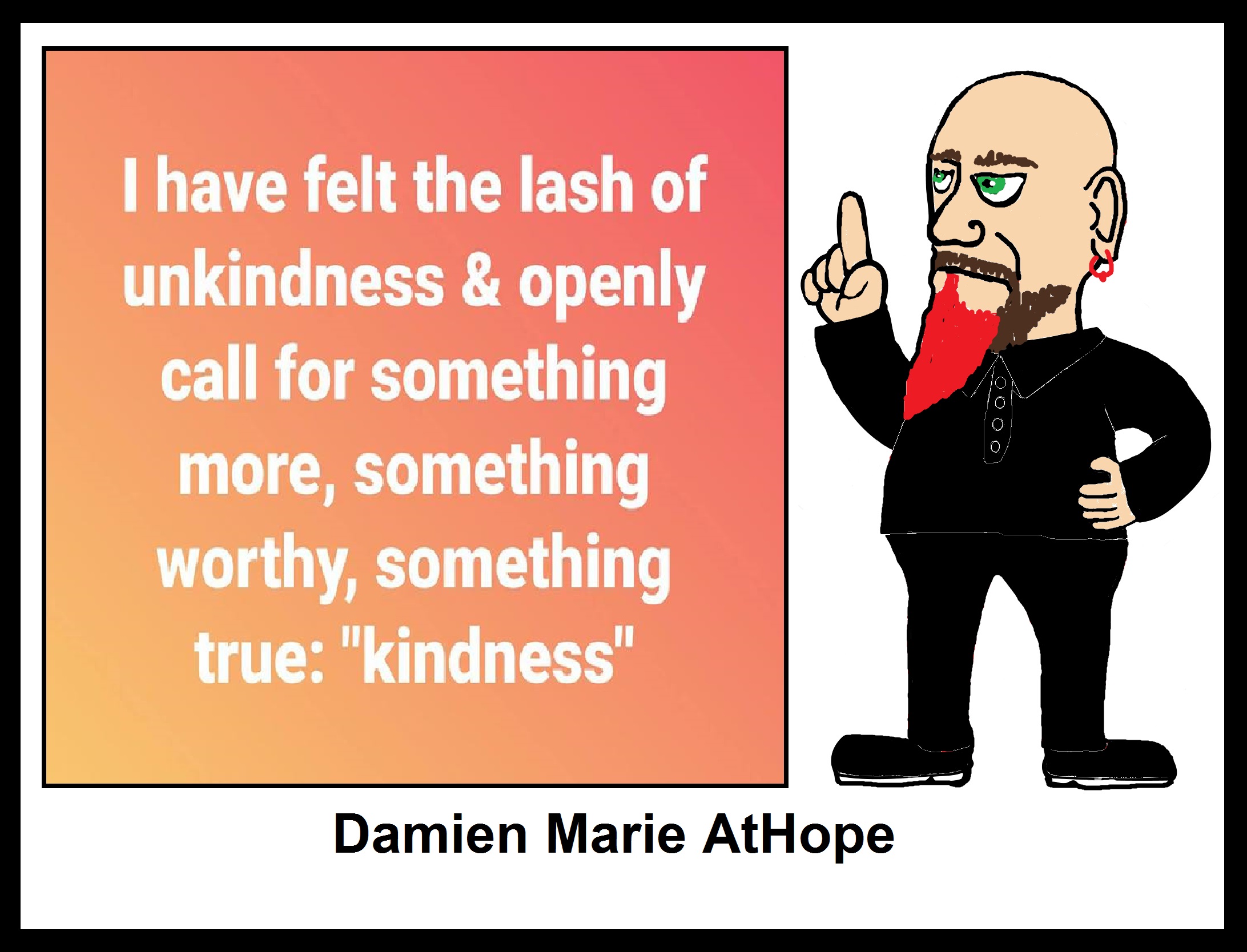

While hallucinogens are associated with shamanism, it is alcohol that is associated with paganism.
The Atheist-Humanist-Leftist Revolutionaries Shows in the prehistory series:
Show two: Pre-animism 300,000 years old and animism 100,000 years old: related to “Anarchism and Socialism”
Show tree: Totemism 50,000 years old: related to “Anarchism and Socialism”
Show four: Shamanism 30,000 years old: related to “Anarchism and Socialism”
Show five: Paganism 12,000 years old: related to “Anarchism and Socialism”
Show six: Emergence of hierarchy, sexism, slavery, and the new male god dominance: Paganism 7,000-5,000 years old: related to “Anarchism and Socialism” (Capitalism) (World War 0) Elite and their slaves!
Prehistory: related to “Anarchism and Socialism” the division of labor, power, rights, and recourses: VIDEO
Pre-animism 300,000 years old and animism 100,000 years old: related to “Anarchism and Socialism”: VIDEO
Totemism 50,000 years old: related to “Anarchism and Socialism”: VIDEO
Shamanism 30,000 years old: related to “Anarchism and Socialism”: VIDEO
Paganism 12,000 years old: related to “Anarchism and Socialism” (Pre-Capitalism): VIDEO
Paganism 7,000-5,000 years old: related to “Anarchism and Socialism” (Capitalism) (World War 0) Elite and their slaves: VIEDO
Paganism 5,000 years old: progressed organized religion and the state: related to “Anarchism and Socialism” (Kings and the Rise of the State): VIEDO
Paganism 4,000 years old: related to “Anarchism and Socialism” (First Moralistic gods, then the Origin time of Monotheism): VIEDO
I do not hate simply because I challenge and expose myths or lies any more than others being thought of as loving simply because of the protection and hiding from challenge their favored myths or lies.
The truth is best championed in the sunlight of challenge.
An archaeologist once said to me “Damien religion and culture are very different”
My response, So are you saying that was always that way, such as would you say Native Americans’ cultures are separate from their religions? And do you think it always was the way you believe?
I had said that religion was a cultural product. That is still how I see it and there are other archaeologists that think close to me as well. Gods too are the myths of cultures that did not understand science or the world around them, seeing magic/supernatural everywhere.
I personally think there is a goddess and not enough evidence to support a male god at Çatalhöyük but if there was both a male and female god and goddess then I know the kind of gods they were like Proto-Indo-European mythology.
This series idea was addressed in, Anarchist Teaching as Free Public Education or Free Education in the Public: VIDEO
Our 12 video series: Organized Oppression: Mesopotamian State Force and the Politics of power (9,000-4,000 years ago), is adapted from: The Complete and Concise History of the Sumerians and Early Bronze Age Mesopotamia (7000-2000 BC): https://www.youtube.com/watch?v=szFjxmY7jQA by “History with Cy“
Show #1: Mesopotamian State Force and the Politics of Power (Samarra, Halaf, Ubaid)
Show #2: Mesopotamian State Force and the Politics of Power
Show #3: Mesopotamian State Force and the Politics of Power (Uruk and the First Cities)
Show #4: Mesopotamian State Force and the Politics of Power (First Kings)
Show #5: Mesopotamian State Force and the Politics of Power (Early Dynastic Period)
Show #6: Mesopotamian State Force and the Politics of Power
Show #7: Mesopotamian State Force and the Politics of Power (Sargon and Akkadian Rule)
Show #9: Mesopotamian State Force and the Politics of Power (Gudea of Lagash and Utu-hegal)
Show #12: Mesopotamian State Force and the Politics of Power (Aftermath and Legacy of Sumer)

The “Atheist-Humanist-Leftist Revolutionaries”
Cory Johnston ☭ Ⓐ Atheist Leftist @Skepticallefty & I (Damien Marie AtHope) @AthopeMarie (my YouTube & related blog) are working jointly in atheist, antitheist, antireligionist, antifascist, anarchist, socialist, and humanist endeavors in our videos together, generally, every other Saturday.
Why Does Power Bring Responsibility?
Think, how often is it the powerless that start wars, oppress others, or commit genocide? So, I guess the question is to us all, to ask, how can power not carry responsibility in a humanity concept? I know I see the deep ethical responsibility that if there is power their must be a humanistic responsibility of ethical and empathic stewardship of that power. Will I be brave enough to be kind? Will I possess enough courage to be compassionate? Will my valor reach its height of empathy? I as everyone, earns our justified respect by our actions, that are good, ethical, just, protecting, and kind. Do I have enough self-respect to put my love for humanity’s flushing, over being brought down by some of its bad actors? May we all be the ones doing good actions in the world, to help human flourishing.
I create the world I want to live in, striving for flourishing. Which is not a place but a positive potential involvement and promotion; a life of humanist goal precision. To master oneself, also means mastering positive prosocial behaviors needed for human flourishing. I may have lost a god myth as an atheist, but I am happy to tell you, my friend, it is exactly because of that, leaving the mental terrorizer, god belief, that I truly regained my connected ethical as well as kind humanity.
Cory and I will talk about prehistory and theism, addressing the relevance to atheism, anarchism, and socialism.
At the same time as the rise of the male god, 7,000 years ago, there was also the very time there was the rise of violence, war, and clans to kingdoms, then empires, then states. It is all connected back to 7,000 years ago, and it moved across the world.
Cory Johnston: https://damienmarieathope.com/2021/04/cory-johnston-mind-of-a-skeptical-leftist/?v=32aec8db952d
The Mind of a Skeptical Leftist (YouTube)
Cory Johnston: Mind of a Skeptical Leftist @Skepticallefty
The Mind of a Skeptical Leftist By Cory Johnston: “Promoting critical thinking, social justice, and left-wing politics by covering current events and talking to a variety of people. Cory Johnston has been thoughtfully talking to people and attempting to promote critical thinking, social justice, and left-wing politics.” http://anchor.fm/skepticalleft
Cory needs our support. We rise by helping each other.
Cory Johnston ☭ Ⓐ @Skepticallefty Evidence-based atheist leftist (he/him) Producer, host, and co-host of 4 podcasts @skeptarchy @skpoliticspod and @AthopeMarie
Damien Marie AtHope (“At Hope”) Axiological Atheist, Anti-theist, Anti-religionist, Secular Humanist. Rationalist, Writer, Artist, Poet, Philosopher, Advocate, Activist, Psychology, and Armchair Archaeology/Anthropology/Historian.
Damien is interested in: Freedom, Liberty, Justice, Equality, Ethics, Humanism, Science, Atheism, Antiteism, Antireligionism, Ignosticism, Left-Libertarianism, Anarchism, Socialism, Mutualism, Axiology, Metaphysics, LGBTQI, Philosophy, Advocacy, Activism, Mental Health, Psychology, Archaeology, Social Work, Sexual Rights, Marriage Rights, Woman’s Rights, Gender Rights, Child Rights, Secular Rights, Race Equality, Ageism/Disability Equality, Etc. And a far-leftist, “Anarcho-Humanist.”
I am not a good fit in the atheist movement that is mostly pro-capitalist, I am anti-capitalist. Mostly pro-skeptic, I am a rationalist not valuing skepticism. Mostly pro-agnostic, I am anti-agnostic. Mostly limited to anti-Abrahamic religions, I am an anti-religionist.
To me, the “male god” seems to have either emerged or become prominent around 7,000 years ago, whereas the now favored monotheism “male god” is more like 4,000 years ago or so. To me, the “female goddess” seems to have either emerged or become prominent around 11,000-10,000 years ago or so, losing the majority of its once prominence around 2,000 years ago due largely to the now favored monotheism “male god” that grow in prominence after 4,000 years ago or so.
My Thought on the Evolution of Gods?
Animal protector deities from old totems/spirit animal beliefs come first to me, 13,000/12,000 years ago, then women as deities 11,000/10,000 years ago, then male gods around 7,000/8,000 years ago. Moralistic gods around 5,000/4,000 years ago, and monotheistic gods around 4,000/3,000 years ago.
To me, animal gods were likely first related to totemism animals around 13,000 to 12,000 years ago or older. Female as goddesses was next to me, 11,000 to 10,000 years ago or so with the emergence of agriculture. Then male gods come about 8,000 to 7,000 years ago with clan wars. Many monotheism-themed religions started in henotheism, emerging out of polytheism/paganism.

Damien Marie AtHope (Said as “At” “Hope”)/(Autodidact Polymath but not good at math):
Axiological Atheist, Anti-theist, Anti-religionist, Secular Humanist, Rationalist, Writer, Artist, Jeweler, Poet, “autodidact” Philosopher, schooled in Psychology, and “autodidact” Armchair Archaeology/Anthropology/Pre-Historian (Knowledgeable in the range of: 1 million to 5,000/4,000 years ago). I am an anarchist socialist politically. Reasons for or Types of Atheism
My Website, My Blog, & Short-writing or Quotes, My YouTube, Twitter: @AthopeMarie, and My Email: damien.marie.athope@gmail.com

